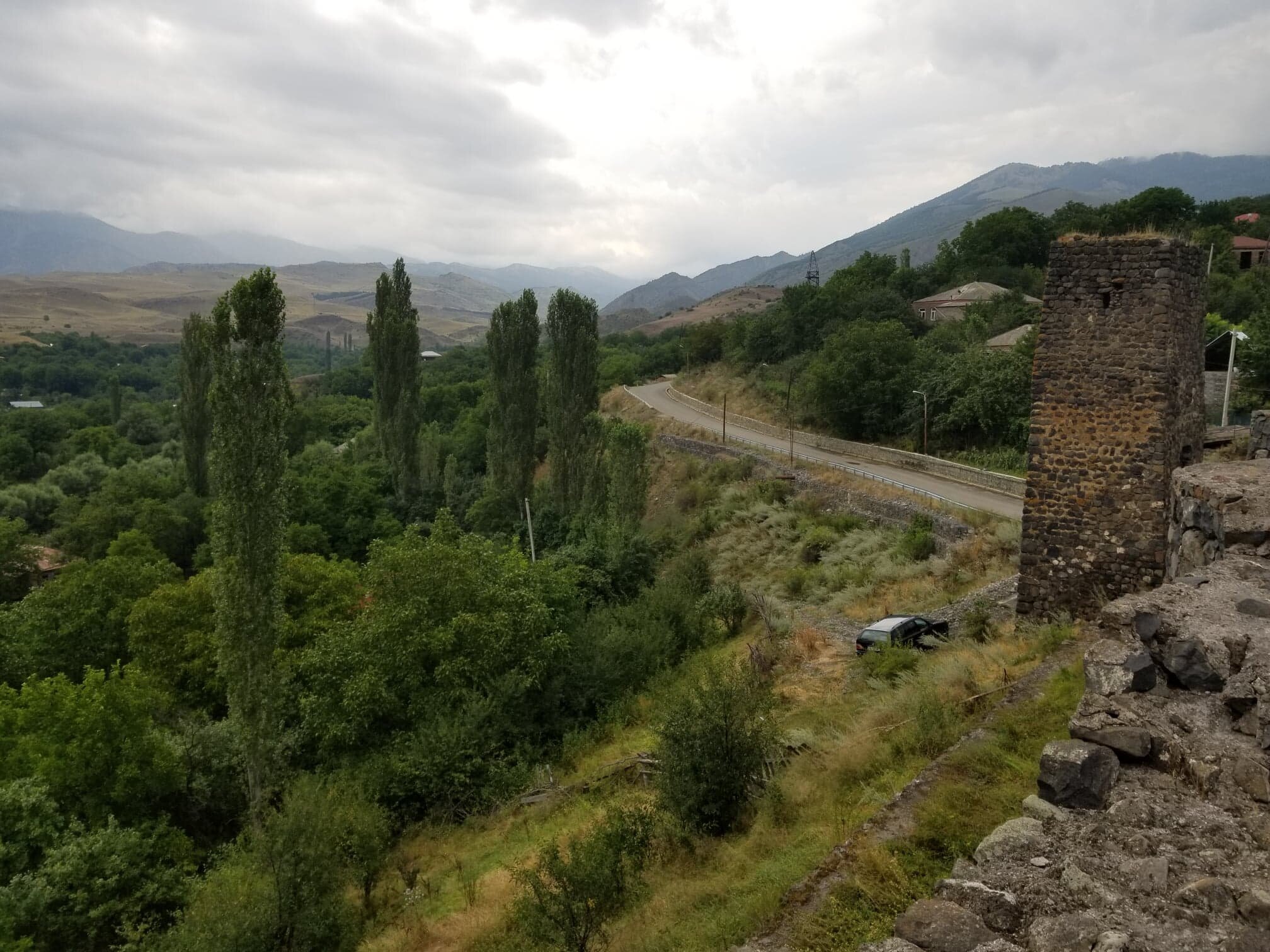A Postcard From Aspindza
Hospitality in the Caucasus is deservedly legendary, and I have had the good fortune of experiencing it firsthand while visiting Georgia over the years. Even short taxi rides were often memorable encounters. En route to a teaching workshop in Kyiv via Tbilisi in 2012, my driver promptly stopped his car in Tbilisi’s old town and retrieved a bottle of homemade Georgian firewater (or “ch’ach’a”) from his trunk upon learning that I had yet to try it. Roughly a year later, after a sleepless overnight train ride from Tbilisi to Zugdidi, where my friend and I discovered upon arrival that the hostel our guidebook recommended was closed, we were invited into another taxi driver’s home to rest, play ping-pong, and enjoy a meal before we crossed into the breakaway state of Abkhazia later that day. More recently, in 2018, I left my cell phone (full of research photos and other cherished snapshots) in the backseat of a cab only to stumble across the driver hours later at Tbilisi’s main police station, where he had graciously returned it.
View over the outskirts of Aspindza from the ruins of a local fortress
Entrance to a Georgian Orthodox church in the village of Saro
The generosity of taxi drivers is but a small taste of the kindness one regularly encounters in Georgia. Sometimes the best experiences are simply fortuitous. On my last trip to Georgia in the summer of 2018, a friend of a friend’s father reserved a place for me on a minibus bound for the town of Aspindza in the region of Samtskhe-Javakheti, where I stayed with a local Armenian family for several days. I was told to ask the locals for Aram when I disembarked, and sure enough, shortly after I arrived and inquired, Aram picked me up in his truck and took me under his wing as if I were a long-lost relative. Aram and his son Levon pulled out all the stops to show me around, taking me to the famous cave city of Vardzia, the restored Rabati Fortress in Akhaltsikhe, the St. Nino nunnery on the shores of Lake Paravani, and into the mountains near Aspindza to admire remote churches that tourists rarely visit. In between excursions, I wiled away the hours with Aram’s family in their leafy garden, enjoying the crisp mountain air, fresh produce, and homemade wine—a welcome reprieve from unbearably hot and humid summer days in Tbilisi.
Aram preparing a vegetable medley
What struck me most during my stay was how easily Aram’s family navigated different (sub-)cultures in the surrounding area. Both at home and on the road, I watched Aram and Levon switch effortlessly between Russian (our language of communication), Georgian, Armenian, and even Azerbaijani as we drove deeper into the multiethnic province of Javakheti and spoke to local residents at village churches and natural springs. Aram is so well respected in this region that one of his friends, a Georgian restaurant owner near the village of Poka, invited us in for fresh fish to break up our long journey. The South Caucasus is often characterized as a fractured region divided along ethnic lines, but this moving display of friendship at a roadside cafe was a reminder that interethnic accord is not so unusual here. Aram’s worldliness was especially remarkable, and from his friends’ praise it was clear that I was very fortunate to have him as my host and tour guide.
I was in Aspindza not only as a traveler eager to experience the charms of the Georgian countryside, but also as a researcher scoping out a potential research site for my dissertation project on the history of the Russian-Ottoman frontier and the Soviet-Turkish border. Though verdant and picturesque today, Samtskhe-Javakheti was the site of imperial conquest in the nineteenth century and the violent unmixing of peoples in the twentieth century. Traces of this turbulent history are visible on and off the well-worn tourist path that winds through the region. Near Aspindza stands the Khertvisi Fortress, an imposing citadel looming over the Mtkvari (Kura) River that was captured by Russian forces during the Russian-Ottoman War of 1828-29. On a sightseeing tour of the area, Aram drove me past a shuttered mosque and stone dwellings where Meskhetian Turks once lived before they were expelled en masse to Central Asia in November 1944 in a Soviet operation designed to secure the border zone abutting Turkey.
View of the Khertvisi Fortress (top left) and the Mtkvari River
Entrance to a former Meskhetian Mosque in the village of Oshora (built circa 1900)
When de-Stalinization began in the mid-1950s, Meskhetian Turks were barred from returning to their homeland because their villages had already been re-inhabited. This initial campaign of “national homogenization” in the Georgian Soviet Socialist Republic in 1944 was followed by postwar expulsions of tens of thousands minorities (e.g., Greeks, Turks, Armenian “Dashnaks,” Iranians, and Mingrelians) from coastal areas of the Caucasus to Central Asia and Siberia between 1949-51.*
Nestled in the Mtkvari River valley, Aspindza and the surrounding area witnessed the hardening of the Soviet-Turkish border as the Second World War drew to a close and the Soviet Union’s Cold War rivalry with Turkey intensified. Without a doubt, the region has seen its fair share of turmoil and tragedy over the centuries. But as Samtskhe-Javakheti continues to develop economically and open up for tourism, vestiges of the tsarist and Soviet past are gradually fading into obscurity, unless one knows where to look. Even the crumbling border settlement of Kartsakhi, where the slogan “To the people—the builders of communism!” greets passers-by, is less notable for its securitized border crossing with Turkey than its beautiful vistas. As I prepare to return to Georgia to conduct archival and field research in 2021, I look forward to revisiting Samtskhe-Javakheti and testing my Georgian language skills as I delve deeper into the region’s history. Perhaps Aram and I will hit the road again—this time, with him driving me to a far-flung medieval church in the mountains while correcting my conjugation of Georgian verbs.
View of Kartsakhi Lake on the Georgian-Turkish border
The names of the people featured in this post have been changed to safeguard their privacy.
*From the Author: For an overview of these wartime and postwar expulsions, see Claire P. Kaiser, “‘What Are they Doing? After All, We’re Not Germans’: Expulsion, Belonging, and Postwar Experience in the Caucasus,” in Krista A. Goff and Lewis H. Siegelbaum, eds., Empire and Belonging in the Eurasian Borderlands (Ithaca and London: Cornell University Press, 2019), 80-94.
By: Harrison King
Program: Eurasian Regional Language Program
Term: Summer 2020






